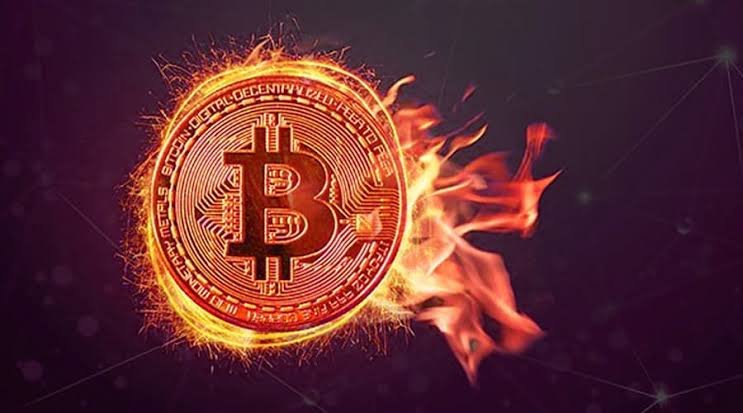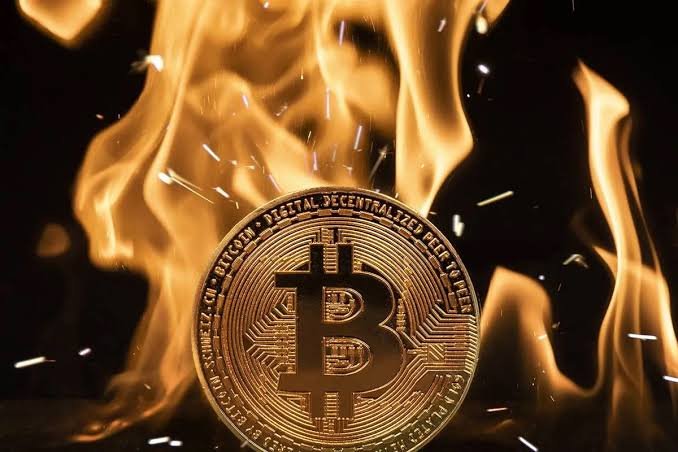
What Does Burning Crypto Mean?
Every Web3 project wants the value of its cryptocurrency to go up. While a crypto's price should correlate with its real-world utility, mechanisms like token burning play a role in determining a token's value. A coin burn takes crypto out of circulation, thus decreasing a cryptocurrency's total supply.
And what does crypto burning mean ? Does it have a good effect on crypto price ? Here is the analysis ;
What does it mean to burn crypto?
Burning crypto is like lighting a flamethrower over piles of cash. However, since cryptocurrencies are digital, people don't literally burn coins—nor do they light their computers on fire!
Instead, crypto users send tokens they want to burn to an inaccessible crypto wallet. While you can see all these burnt tokens on the blockchain, nobody can access them. Therefore, whatever crypto winds up in the "burn wallet" is subtracted from the cryptocurrency tokens’ max supply.
Some token holders liken crypto burns with stock buyback programs. In both strategies, leaders deliberately take their shares or tokens out of circulation.

Why burn crypto?
Now that you know how to burn crypto coins, you may ask why anyone would throw away their tokens. Even more surprising, why do so many companies and blockchain projects create burning mechanisms?
People use crypto burning for many reasons, but they all have something to do with the law of supply versus demand. Crypto burning directly impacts the number of tokens available for trading. As more crypto gets burned, the token count in the circulating supply decreases. As long as demand remains steady, this should lead to an increase in the per token value.
Crypto projects often use these burning techniques to make their tokens deflationary. Assuming the underlying crypto project is successful, token burning may artificially increase a token's price.
Often, a token burn is viewed as a "bullish" sign in the crypto market. Indeed, many crypto projects see an initial price jump soon after developers announce a token burn. Many projects use token burns to draw attention to their projects and offer an incentive for new investors.
However, there are non-promotional reasons why people would choose to burn cryptocurrency. Interestingly, a few smaller blockchains use a proof-of-burn (PoB) consensus mechanism to verify transactions. While PoB isn't as widely used as proof-of-work or proof-of-stake, some niche projects choose to burn tokens to secure their networks.
Also, many stablecoins use token burns to maintain the value of their digital currencies. This is especially true for algorithmic stablecoins. Unlike centralized stablecoins like USDT or USDC, algorithmic stablecoins like Maker's Dai often rely on advanced burning and minting mechanisms to maintain a consistent value.
Where does burnt crypto go?
Burnt crypto goes to a wallet known as a "burn address" or "eater address." While the public address for this wallet is verifiable on the blockchain, nobody holds the private keys. Nobody can access the crypto inside without the private keys. Thus, whatever crypto goes to a burn address will never flow back into circulation.
What are some famous crypto burns?
Binance
The centralized crypto exchange Binance is one of the most famous companies to employ a token-burning mechanism. Since Binance released its BNB token in 2017, it has pledged to buy and burn a portion of its tokens every quarter.
Initially, Binance used trading data on its central exchange to determine how many BNB to burn. However, it now focuses on the number of blocks produced on its BNB Smart Chain (BSC). These quarterly burns will end once 100 million BNB tokens are in the max supply.
In addition to the quarterly BNB burn, Binance introduced the BEP-95 upgrade in 2021. This additional burning mechanism removes a portion of BNB fees on the BSC for every transaction. Unlike the quarterly burns, Binance plans to keep the BEP-95 mechanism in place after hitting the 100 million token mark.
EIP-1559
Another famous example of crypto burning is Ethereum's EIP-1559 upgrade of 2021. EIP-1559 introduced new burning mechanics onto the Ethereum blockchain. Since its implementation, a portion of every gas fee on Ethereum automatically goes to a burn address.
The primary goal behind EIP-1559 was to make transactions on Ethereum more convenient for users. To do this, Ethereum developers created a separation between the "base fee" and the "miner tip." While the base fee is the minimum gas necessary to submit a transaction on the Ethereum blockchain, the miner tip incentivizes validators to confirm transactions quicker on the Ethereum chain.
Under this new model, the base fee is permanently deleted from circulation after a transaction has cleared. Miners only receive the miner tip as their incentive. Also, EIP-1559 adjusts the block size per transaction volume, which automatically adjusts the base fee. When network activity increases, so does the base fee and vice versa.
This intricate system was designed to avoid Ethereum's previous first-price auction model that always favored users willing to pay high fees to confirm their transactions.
EIP-1559 also may have significant implications on Ether's future supply. If network activity increases on Ethereum, ETH's burn rate can potentially exceed its daily issuance. Some Ethereum supporters argue ETH can become a deflationary asset someday.
Is crypto burning good?
Crypto burning is often interpreted as a positive event in crypto, but it's not necessarily a good feature. Just because a project has a burning mechanism doesn't mean it's destined to rise in value. If a cryptocurrency doesn't have a clear vision, strong leaders, or robust technology, it's unlikely a burning mechanism will help drive long-term demand.
It's increasingly common for projects to use the allure of crypto burns to encourage people to buy their tokens. In a worst-case scenario, a crypto project can run off with users' funds in a rugpull.
However, even if developers are genuinely interested in their token, there's no guarantee a token burn will increase demand. Crypto burning can't save a digital token with poor fundamentals, zero utility, and an uncertain future.
Remember, there are successful crypto projects that don't have crypto-burning mechanisms. Ironically, Dogecoin is an inflationary cryptocurrency. Despite this, DOGE had one of the most spectacular bull runs in crypto history back in 2021.
Bitcoin (BTC) also doesn't have burning mechanisms built into its blockchain. Even with its hard-cap supply, it remains the most valuable cryptocurrency in terms of market cap. These examples highlight the significance of demand in determining a cryptocurrency's value. Although crypto burns affect a token’s supply, there need to be enough interested buyers to increase the price.
Investors should always consider why a crypto project wants to introduce token burning. Developers should have a clear goal in mind for introducing burning mechanisms. If the project's leaders can't articulate why they're adding token burning, there's likely no good reason to introduce this feature.
Can Bitcoin be burned?
Even if a cryptocurrency doesn't have a built-in burning mechanism, it doesn't mean people can't burn it. For instance, there are no automated burning schedules on the Bitcoin blockchain, but people can send their bitcoins to a burn address.
Indeed, there have been many cases where people accidentally burned their bitcoins after losing the private keys to their crypto wallets. For example, the early Bitcoin miner James Howells threw away a hardware device containing 8,000 BTC in 2013. Unless Howells can recover this wallet from a U.K. dump, he can't access these coins.
However, this doesn't mean that Bitcoin is a deflationary cryptocurrency. Interestingly, Bitcoin's supply will continue increasing until it reaches the 21 million threshold. More bitcoins are mined into circulation each day, but this rate gets cut in half every four years with a halving event. Despite the sharp reduction in daily issuance, Bitcoin is technically inflationary until it hits its max supply in 2140.
Crypto investors must write their private keys on multiple pieces of paper and lock them in safes to prevent accidentally burning their Bitcoin holdings. People who hold crypto should also consider writing private key information into legal documents, such as a will. Without accurate private key information, the cryptocurrency in a wallet will remain out of circulation.
Wrapping up
Sometimes, crypto burns are perceived as gimmicks or publicity stunts, but that doesn't mean they’re scams. Indeed, crypto burns are integral to a blockchain's monetary policy. Clearly defined burning mechanisms can help people better analyze the supply versus demand of a given crypto asset. Also, many projects like stablecoins rely on burning to maintain their value.
In the world of crypto, there’s a company that assures its users’ safety, privacy, and anonymity. At Worldcoin, we aim to put a share of our crypto in the hands of every individual on the planet for free. Subscribe to our blog to explore the crypto market.